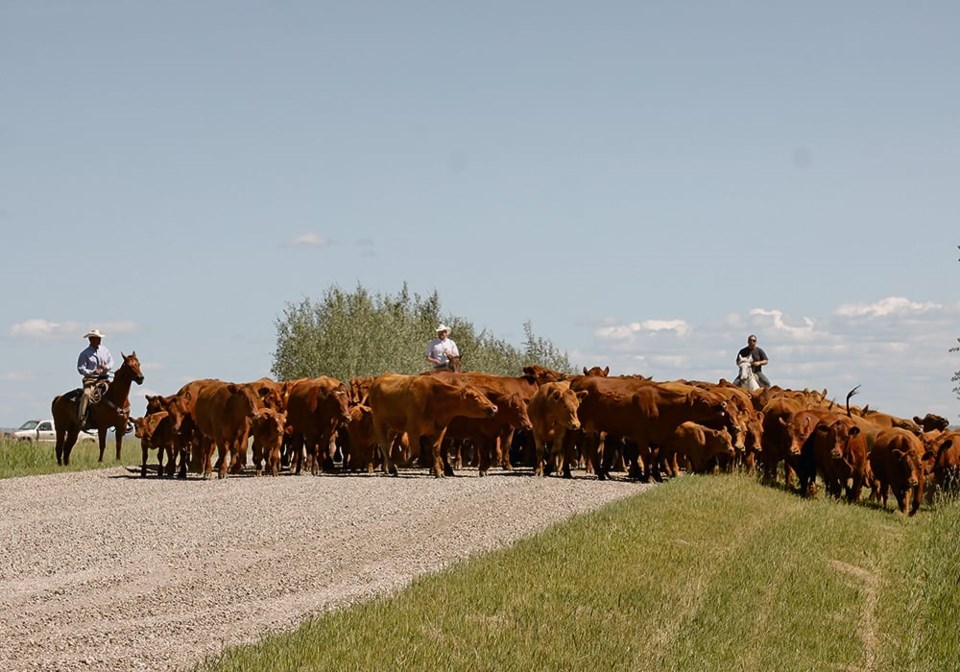REGINA — Livestock Services of Saskatchewan will soon roll out a new digital records tool and app to help the industry move away from paper while meeting federal legislation.
The MyLivestock portal will be available for non-inspected movement likely in March. However, chief executive officer Jason Pollock said its primary purpose is to serve as the repository of information required by Ottawa for humane transport and traceability once those regulations are implemented. He expects the latter could occur in 2026 or 2027.
“The interesting thing to me in the conversations I have with producers is most of them have no idea they are out of compliance with humane transport legislation,” Pollock said in an interview.
They don’t necessarily know what that legislation involves or how to become compliant. MyLivestock, developed with SaasyCloud software developers, will help.
Pollock said Saskatchewan is the test case and eventually the portal could be available across Canada.
Non-inspected movement is the easiest to roll out because it simply documents animal movement from, for example, one pasture to another, if it’s more than 50 kilometres away from the premises.
Pollock used the example of moving cattle to rented land 60 km away.
“By Saskatchewan law I need to have a non-inspected manifest in my possession for that trip. Also, by humane transport regulations, I need to have a transport record because I’m also the one transporting the animals, so the transporter needs to have that,” he said.
“When the traceability legislation gets in, that’s a different PID (premises) so I need to submit that movement into (the Canadian Livestock Tracking System). That’s all on me as a producer/transporter and has nothing to do with LSS.”
The next phase is termed country work. That’s when a producer is selling to a dealer and the dealer is picking up at the farm. The inspector is called to look at the calves as they go onto the truck. Pollock said that’s the next easiest because it just involves LSS.
Pilot projects in 2024 will test how the tool works for this process.
The final phase is the markets. The current paper manifests are used by auction marts for internal management and results in many moving parts, said Pollock.
Producers will set up their own accounts in the portal or app and control their own data, but the system will send it to CLTS.
Once traceability is in place, receivers of livestock are required to report that movement.
“If you go out and buy a couple of bred heifers at the auction mart and you get them home, now you’re responsible to report that to CLTS within seven days,” he said.
“The tool will do it at your request. It’s your data.”
Pollock said the app first needs to satisfy the federal requirements and will then roll in the provincial requirements in those three areas.
He hopes it will grow organically as producers and transporters educate each other. It is designed so that people with minimal technical ability will be able to use it.
Pollock said LSS has been talking with Manitoba, where LSS conducts inspections at major auction marts in the absence of mandatory inspection there.
An ad hoc group, the Coalition for Beef Cattle Movement, recognizes the need for an industry tool to meet the requirements and doesn’t want to reinvent the wheel, he said.
LSS has also been discussing with both Manitoba Beef Producers and the government about its capacity to undertake inspection throughout that province if and when it moves forward with mandatory inspection.
The organization has talked with the Canadian Meat Council, processors and others about MyLivestock because of the role processors play in retiring tags once animals move through the system.
“Having this tool bring to their door a digital set of records that they can rely on and reconcile against when they do their processing has great value for them,” said Pollock.
He added that the system will have the capability to hold data on a smartphone in a dead zone, for example, and then synch once a connection is established.
The portal will be available in app stores. A free version will have a basic capacity and after that it will cost money, but Pollock said it will be nowhere close to the cost of handling paper records.
Meanwhile, LSS is signalling the need for a fee increase soon. Fees have not gone up in the 10 years since the organization took over from the provincial government and the cost is currently $2.75 per head.
Brand inspectors look at about 1.6 million head each year. Although the cow herd has been declining that number has remained about the same except for three years ago when it hit 1.8 million.
“While our inspections are kind of in a steady state, our expenses are not,” Pollock told the Saskatchewan Stock Growers Association semi-annual meeting in January.
More than 60 inspectors work for LSS and he said salaries and benefits account for 75 to 80 percent of expenses.
“LSS has not struggled with attracting individuals to our organization on the wages and benefits side,” he said, noting most prefer the flexibility that allows them to also be producers or transporters.
“That hasn’t happened until this year, and now we’re starting to have a little pushback.”
The board has agreed to delay fee increases as long as possible.
“I do want to make sure everybody’s aware that we’ve reached the point that we’re going to be in our contingency fund,” said Pollock. “When we reach the point that’s been established by the board where the sustainability of the organization is breached, that’s the trigger point.”
That is likely to happen within the next 12 to 18 months, he added.




